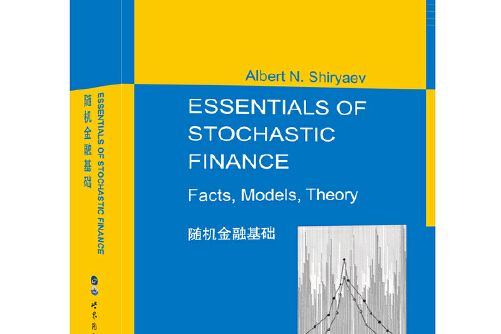內容簡介
《隨機金融基礎》為金融數學和工程數學的讀者提供了機率統計的基本觀射承雄點和隨機分析市場風險講章仔的分析肯鴉放嘗方法。書中不僅涵蓋了金融數學中能夠運用到的機率內容,也介紹了該領域的*進展,內容包含金融數學、熵以及馬爾科夫理論,全書理論與實踐相結合,脈絡清晰流暢。每部分的講解從特殊到一般,從實例到結果,綜合性強。第二部分的婆組學習需要對隨機微積分知識有相當的了解。
圖書目錄
Foreword
Part 1.Facts.Models
Chapter I.Main Concepts,Structures,and Instruments
Aims and Problems of Financial Theory
and Financial Engineering
1.Financial structures and instruments
§1a.Key objects and structures
§1b.Financial markets
§1c.Market of derivatives.Financial instruments
2.Financial markets under uncertainty.Classical theories of
the dynamics of financial indexes,their critics and revision
Neoclassical theories
§2a.Random walk conjecture and concept of efficient market
§2b.Investment portfolio.Markowitz'S diversification
§2c.CAPM:潤詢舉Capital Asset Pricing Model
§2d.APT:Arbitrage Pricing Theory
§2e.Analysis,interpretation,and revision of the classical concepts of efficient market
§2f.Analysis,interpretation,and revision of the classical conceDts of efficient market.II
3.Aims and problems offinancial theory,engineering, and actuarial calculations
§3a.譽備紋淋Role of financial theory and financial engineering.Financial risks
§3b.Insurance:a social mechanism of compensation for financial 10sse8
§3c.A classical example of actuarial calculations:跨甩設the Lundberg-Cramer theorem
Chapter II.Stochastic Models.Discrete Time
1.Necessary probabilistic concepts and several models of the dynamics of market prices
§1a.Uncertainty and irregularity in the behavior of prices.Their description and representation in probabilistic terms
§1b.Doob decomposition.Canonical representations
§1c.Local martingales.Martingale transformations.Generalized martingales
§1d.Gaussian and conditionally Ganssian models
§1e.Binomial model of price evolution
§1f.Models with discrete intervention of chance
2.Linear stochastic models
§2a.Moving average model MA(q)
§2b.Autoregressive model AR(p)
§2c.Autoregressive and moving average model ARMA(p,q) and integrated model ARIMA(p,d,q)
§2d.Prediction in linear models
3.Nonlinear stochastic conditionally Gaussian models
§3a.ARCH and GARCH models
§3b.EGARCH,TGARCH,HARCH,and other models
§3c.Stochastic volatility models
4.Supplement:dynamical chaos models
§4a.Nonlinear chaotic models
§4b.Distinguishing between'chaotic'and'stochastic'sequences
Chapter III.Stochastic Models.Continuous Time
1.Non-Gaussian models of distributions and processes
§1a.Stable and infinitely divisible distributions
§1b.Ldvy processes
§1c.Stable processes
§1d.Hyperbolic distributions and processes
2.Models with self-similarity.Fractality
§2a.Hurst'S statistical phenomenon of self-similarity
§2b.A digression on fractal geometry
§2c.Statistical sel5similarity.Fractal Brownian motion
§2d.Fractional Gaussian noise:a process with strong aftereffect
3.Models based on a Brownian motion
§3a.Brownian motion and its role of a basic process
……
Chapter IV.Statistical Analysis of Financial Data
Part 2.Theory
Chapter V.Theory of Arbitrage in Stochastic Financial Models.Discrete Time
Chapter VI.Theory of Pricing in Stochastic Financial Models.Discrete Time
Chapter VII.Theory of Arbitrage in Stochastic Financial Models. Continuous Time
Chapter VIII.Theory of Pricing in Stochastic Financial Models.Continuous Time
作者簡介
Albert N. Shiryaev,俄羅斯著名數學家,斯捷克洛夫數學研究所和莫斯科州立大學(Steklov Mathematical Institute and Moscow State University)教授,1974年獲馬爾可夫獎。
§3a.Role of financial theory and financial engineering.Financial risks
§3b.Insurance:a social mechanism of compensation for financial 10sse8
§3c.A classical example of actuarial calculations:the Lundberg-Cramer theorem
Chapter II.Stochastic Models.Discrete Time
1.Necessary probabilistic concepts and several models of the dynamics of market prices
§1a.Uncertainty and irregularity in the behavior of prices.Their description and representation in probabilistic terms
§1b.Doob decomposition.Canonical representations
§1c.Local martingales.Martingale transformations.Generalized martingales
§1d.Gaussian and conditionally Ganssian models
§1e.Binomial model of price evolution
§1f.Models with discrete intervention of chance
2.Linear stochastic models
§2a.Moving average model MA(q)
§2b.Autoregressive model AR(p)
§2c.Autoregressive and moving average model ARMA(p,q) and integrated model ARIMA(p,d,q)
§2d.Prediction in linear models
3.Nonlinear stochastic conditionally Gaussian models
§3a.ARCH and GARCH models
§3b.EGARCH,TGARCH,HARCH,and other models
§3c.Stochastic volatility models
4.Supplement:dynamical chaos models
§4a.Nonlinear chaotic models
§4b.Distinguishing between'chaotic'and'stochastic'sequences
Chapter III.Stochastic Models.Continuous Time
1.Non-Gaussian models of distributions and processes
§1a.Stable and infinitely divisible distributions
§1b.Ldvy processes
§1c.Stable processes
§1d.Hyperbolic distributions and processes
2.Models with self-similarity.Fractality
§2a.Hurst'S statistical phenomenon of self-similarity
§2b.A digression on fractal geometry
§2c.Statistical sel5similarity.Fractal Brownian motion
§2d.Fractional Gaussian noise:a process with strong aftereffect
3.Models based on a Brownian motion
§3a.Brownian motion and its role of a basic process
……
Chapter IV.Statistical Analysis of Financial Data
Part 2.Theory
Chapter V.Theory of Arbitrage in Stochastic Financial Models.Discrete Time
Chapter VI.Theory of Pricing in Stochastic Financial Models.Discrete Time
Chapter VII.Theory of Arbitrage in Stochastic Financial Models. Continuous Time
Chapter VIII.Theory of Pricing in Stochastic Financial Models.Continuous Time
作者簡介
Albert N. Shiryaev,俄羅斯著名數學家,斯捷克洛夫數學研究所和莫斯科州立大學(Steklov Mathematical Institute and Moscow State University)教授,1974年獲馬爾可夫獎。

